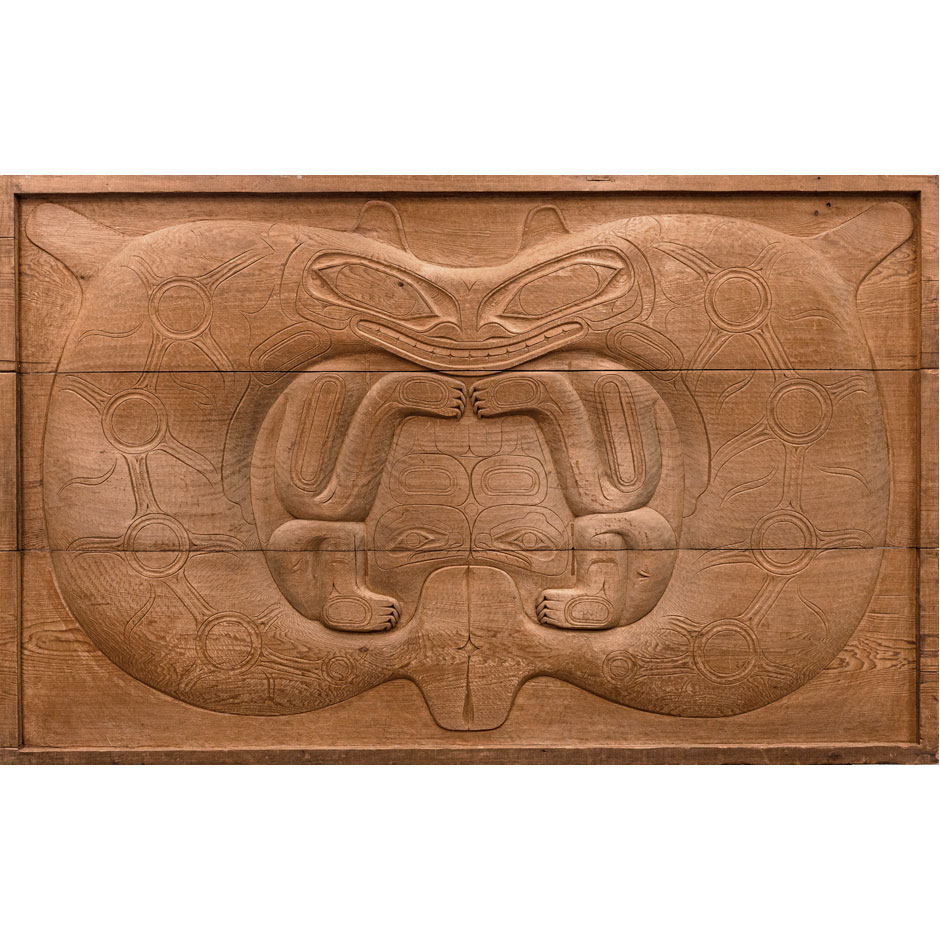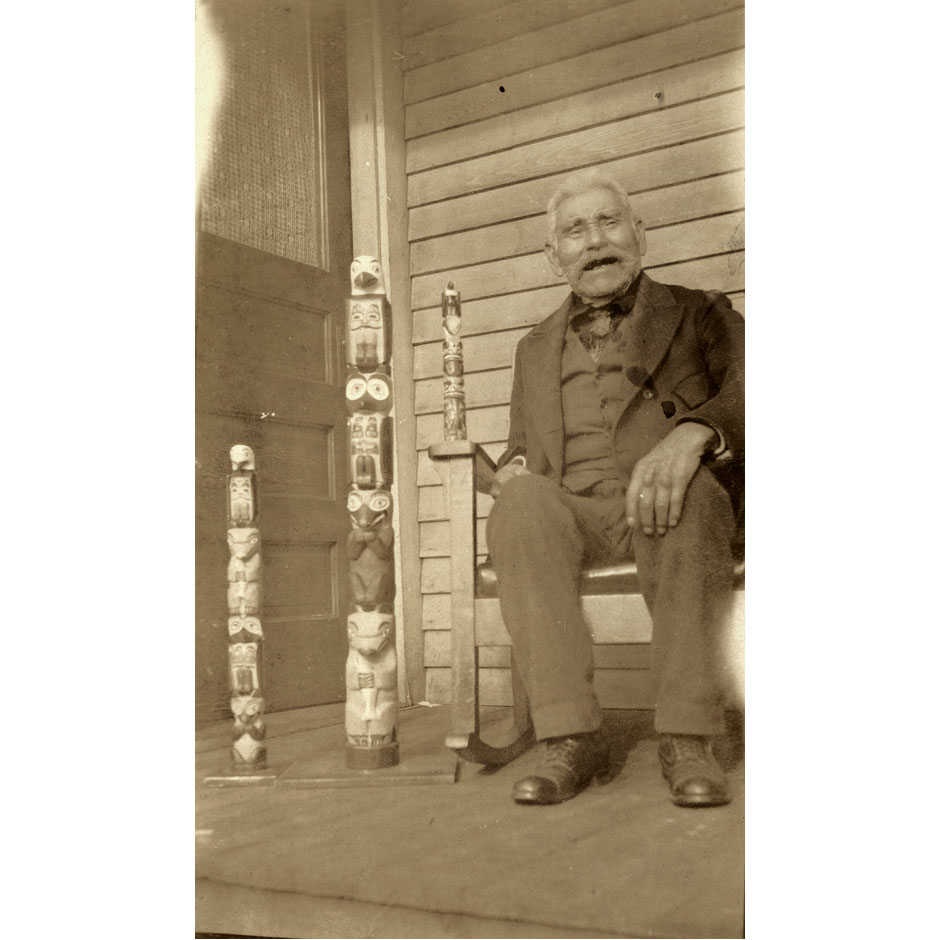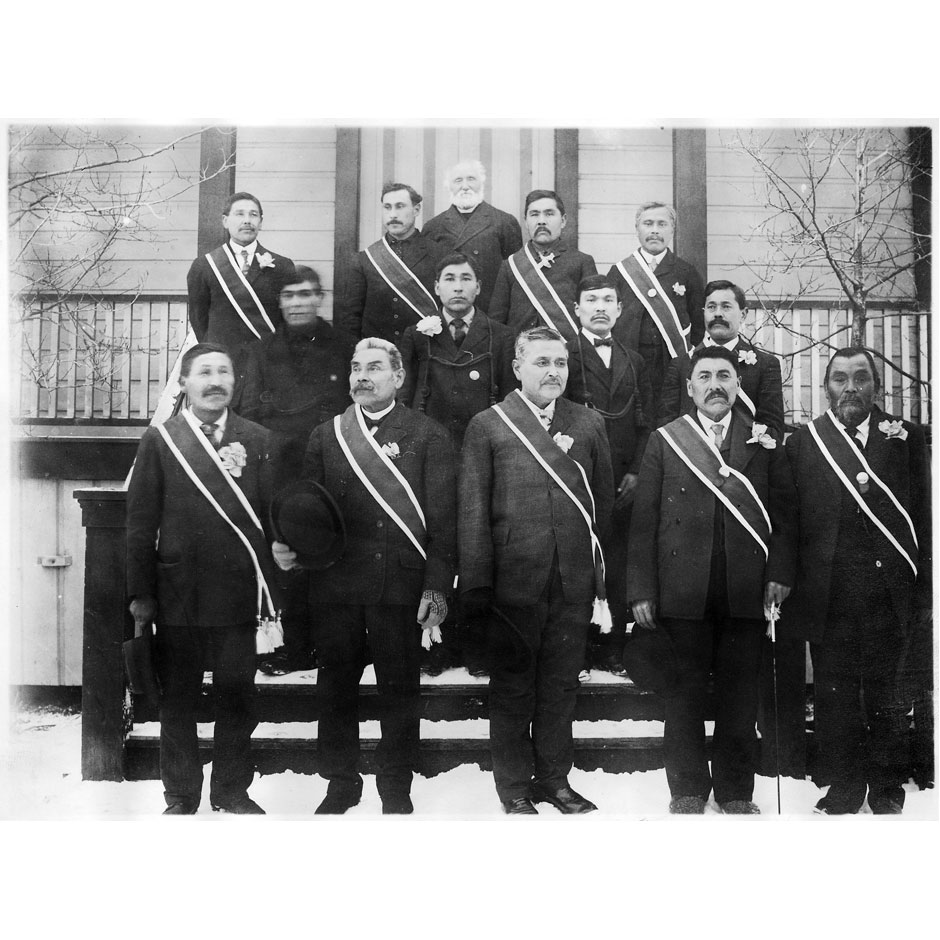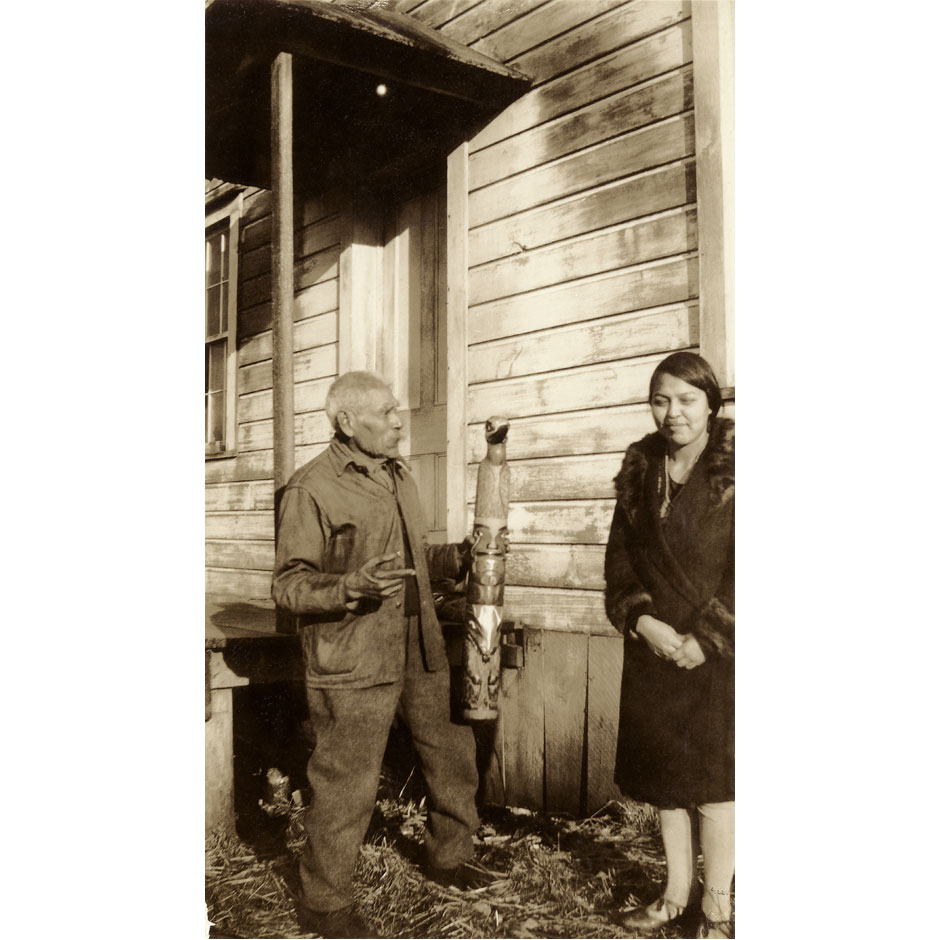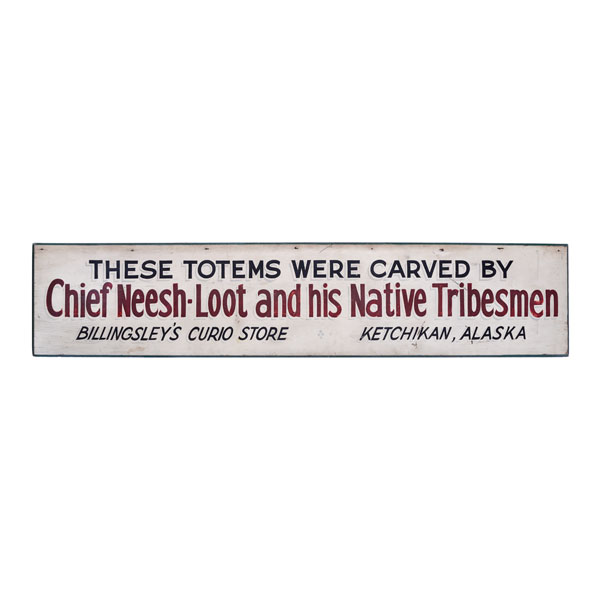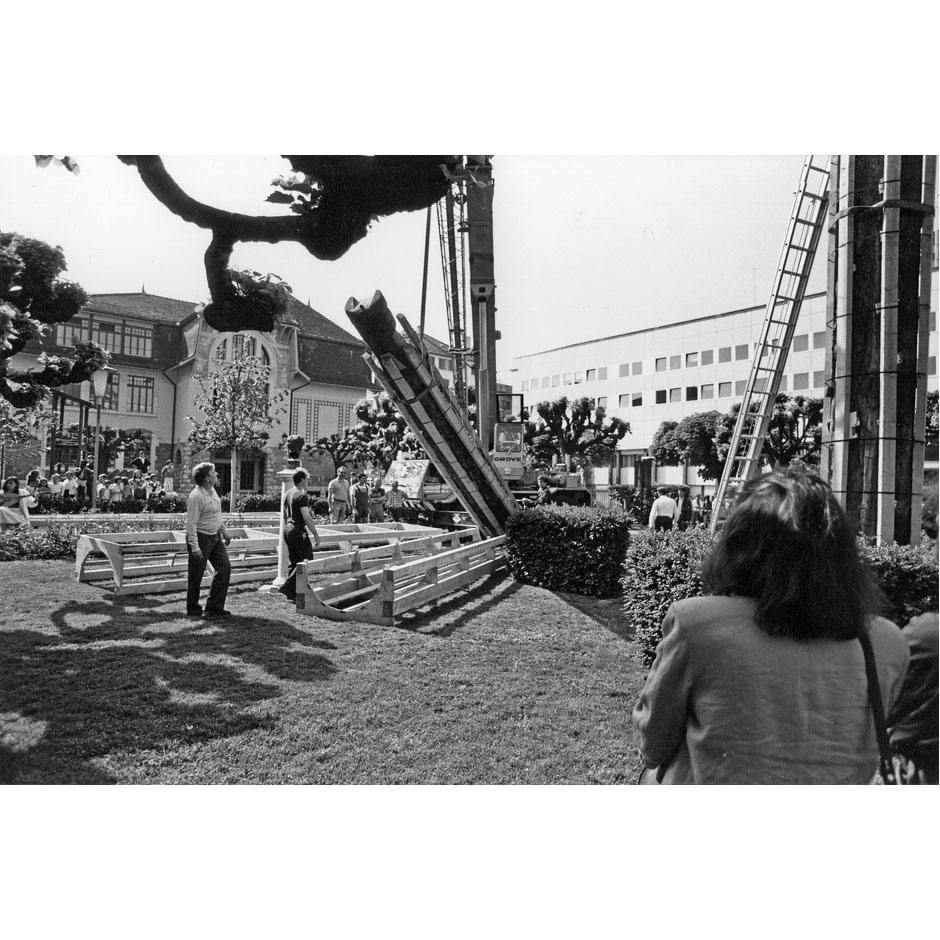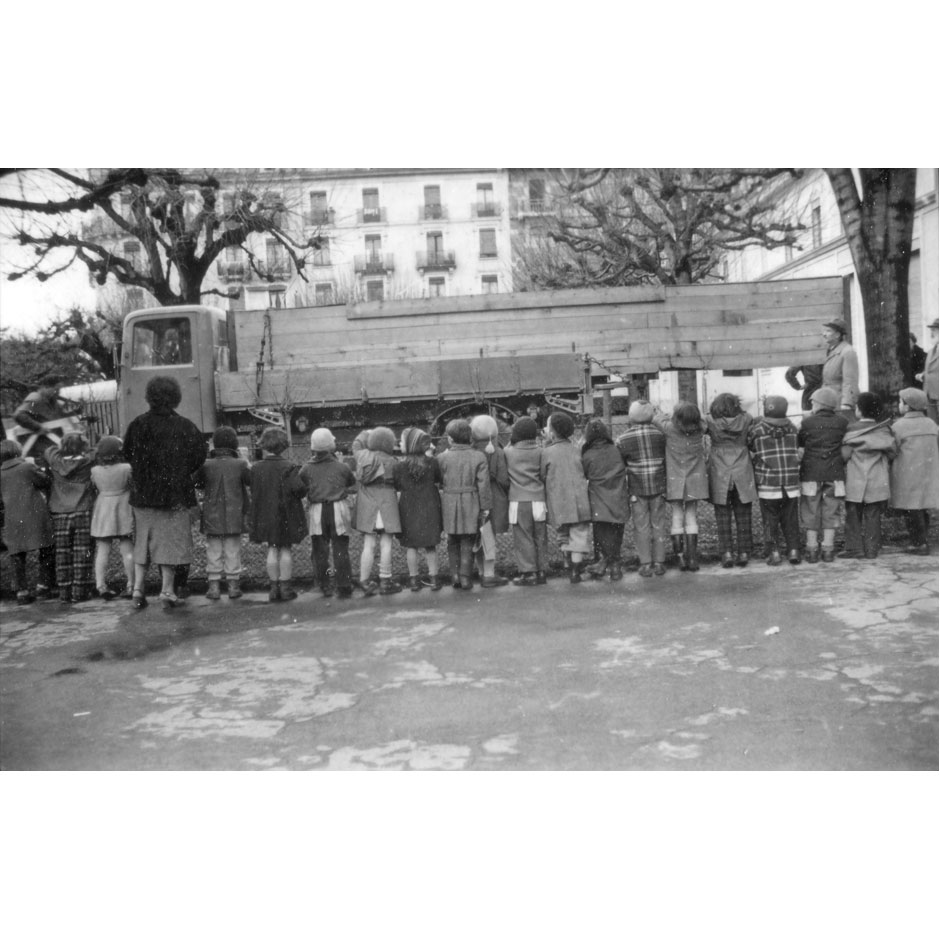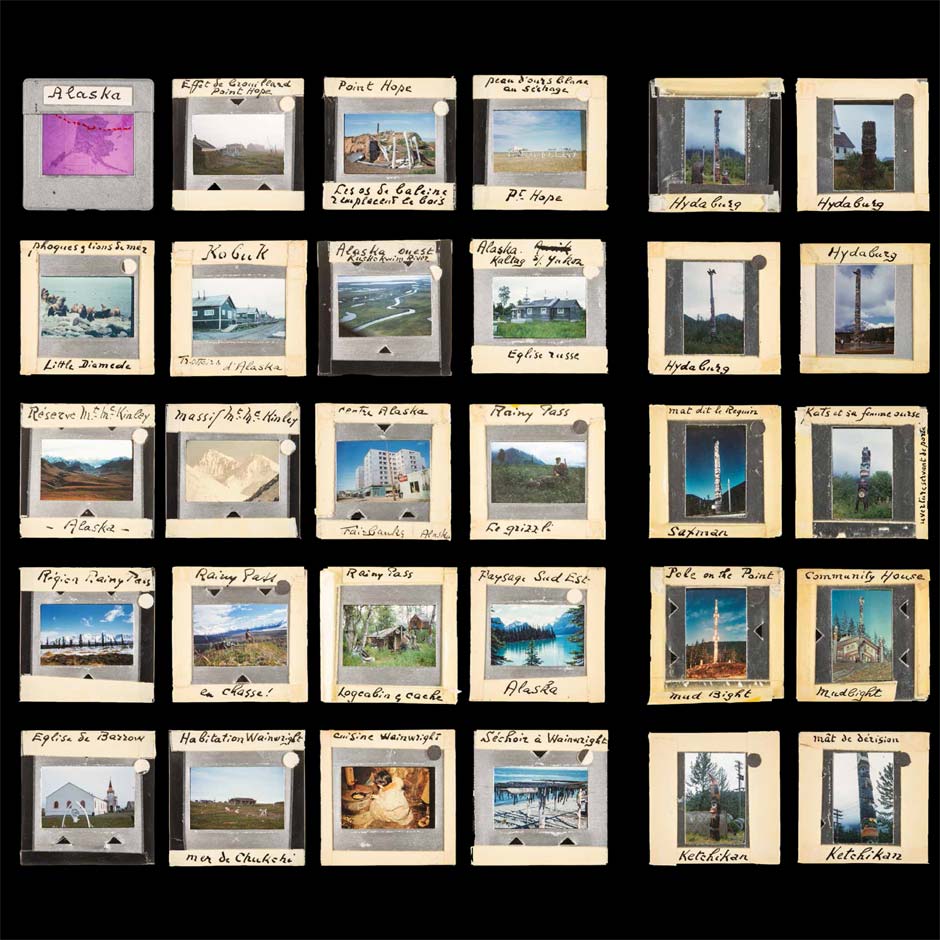SM'OOGYIT NIISHLUUT

In Sm’algyax, the Ts’msyen language, Sm’oogyit means «chief» and Niishluut means «grandfather of the carving tools». Sm’oogyit Niishluut, also called Sidney Campbell, comes from Metlakatla in Alaska. He is the carver of the crane and thunderbird totem poles which have been in Geneva since 1956.
The significance of these two totem poles has raised many questions up until now. The relationship recently established between the Ts’msyen of Metlakatla, the carver’s descendants and Geneva has given them a new meaning.
They are witnesses to a past generation which had to adapt to colonial policies which banned many aspects of Ts’msyen culture, including the ceremonies. Today they still have great significance to Niishluut’s family and community as they connect the past to the rich living Ts’msyen culture of the present. Imagined collaboratively, this installation tells these totem poles’ particular story, their origin, their journey from Alaska to Geneva and the importance of this legacy today.
Shahtk – Myranell Bergtold
Sm Łoodm ‘Nüüsm – Mique’l Dangeli
Holtka Xsoo – Clifton Guthrie
Lucie Monot/MEG
Holtka Xsoo – Clifton Guthrie
Lucie Monot/MEG

Sm’oogyit Niishluut – Chief Sidney Campbell wearing his chiefly regalia, on which is depicted his crest wil na guguut ’neexł (colliding killerwhales)
Photographer not documented. Ca. 1880
British Columbia
Exhibition print ©Alaska State Library, Juneau, United States, Duncan Cottage Museum, Photo Collection, PCA 43-28
Sm’oogyit Niishluut – Chief Sidney Campbell was a Ts’msyen master carver and the first from Metlakatla, Alaska to make and raise full-sized totem poles. Two of his totem poles are in MEG’s collection. Niishluut was born in 1840 in Lax Kw’alaams, British Columbia and died in Metlakatla, Alaska in 1934. Ts’msyen and Christian beliefs provided the foundation of his work as a carver and a leader among his people. From childhood, he trained as a Gitsontk, a powerful secret society of carvers specializing in Naxnox (elaborate ceremonial masks and headdresses). Upon being baptized as an adult, he received the name Sidney Campbell. As a founder of Metlakatla, Alaska, his negotiation skills were pivotal in their acquisition of land rights. There, he continued to carve, sing ceremonial songs, tell adaawx (ancient oral history), and teach others, including his grandson, Solomon Guthrie. Many of Solomon’s descendants, including master weaver Myranell Bergtold and carver Clifton Guthrie, continue Niishluut’s legacy and work diligently to ensure his history is known.
Metlakatla, Alaska
Metlakatla, Alaska was founded in 1887 by eight hundred and twenty-three Ts’msyen who decided to leave Canada to start a new community where they could provide a better future for their people. The catalyst for their decision was an 1886 verdict denying their land claims in British Columbia. Lay missionary William Duncan, who lived and worked among the Ts’msyen since 1857, assisted with their case to hinder the Church Missionary Society of England’s ability to remove him from his post due to his incomplete training. When their Canadian case was denied, Duncan supported the Ts’msyen in acquiring land rights in the United States and moved with them to Alaska, where they have an ancient history of trade, fishing, and land usage. After years of negotiations led by the Ts’msyen leaders, such as Sm’oogyit Niishluut – Chief Sidney Campbell, they won their land claims case through a congressional act in 1891. Today, they remain the only Indian Reserve in Alaska and the only Ts’msyen community that has settled their land rights.
Liimiim gitwaaltk - Warrior Song
by Niishluut – Sidney Campbell
by Niishluut – Sidney Campbell
Sang by Jennifer McCarty
Ts’msyen. United States, Alaska, Metlakatla
The song belongs to the Solomon Guthrie family and is recorded with permission from Myranell Bergtold in 2023 for the exhibition.
With images by Rebecca Cooper and Johnathan Watts. Edited by Johnathan Watts
Time: 01 min. 10 sec.
Invitational
Excerpt of the performance of Ts'msyen dance group Tsmaay (4th Generation Tsimshian Dancers) from Metlakatla at Sealaska Heritage's event Celebration 2018
United States, Alaska, Juneau. 2018
Footage courtesy of Sealaska Heritage Institute, Juneau
Time : 03 min. 48 sec.
Digital design by Holtka Xsoo – Clifton Guthrie based on the formline design he carved on the bentwood chest he created in legacy of Sm'oogyit Niishluut, 2024

Clifton Guthrie
Clifton Guthrie, whose Ts’msyen name is “Holtka Xsoo”, meaning “Full Canoe”, is a Ts’msyen carver of the Laxskiik clan (Eagle clan), from Metlakatla, Alaska. Clifton was surrounded with traditional Ts’msyen art growing up, much of his inspiration to become a carver stemmed from playing with his great uncle Niishluut’s model totem poles at his grandfather’s house as a child. He and his family work hard to instill traditional values and ways of living into their lifestyle to pass on to future generations.
©Photo Johnathan Watts/MEG
©Photo Johnathan Watts/MEG
The Ts’msyen Crane and Thunderbird Totem Poles
For 34 years, the Ts’msyen crane and thunderbird totem poles were part of the lives of the people of Geneva. George Barbey purchased them in 1955 in the town of Ketchikan, in south-east Alaska. He donated them to the Ethnography Museum where their installation was inaugurated on 9 June 1956. On 12 May 1990, they were taken down for safety reasons and replaced in 2000 by copies. Today these are standing in Gourgas Park while the original totem poles are kept in the museum’s storage. Today, the question of these two totem poles’ conservation and future has brought together the people for whom they matter. Descendants of the carver Sm’oogyit Niishluut – Chief Sidney Campbell and members of the family of Georges Barbey, the donator, have been meeting and discovering their respective attachment to these objects. Links are being formed as the history of these two totem poles and the meaning they have for all those involved is explored.
Lucie Monot/MEG

The Ts’msyen Crane and Thunderbird Totem Pole in front of the Ethnography Museum of Geneva in the early 1960s
Photographer not documented
MEG Archives, negative 11052
